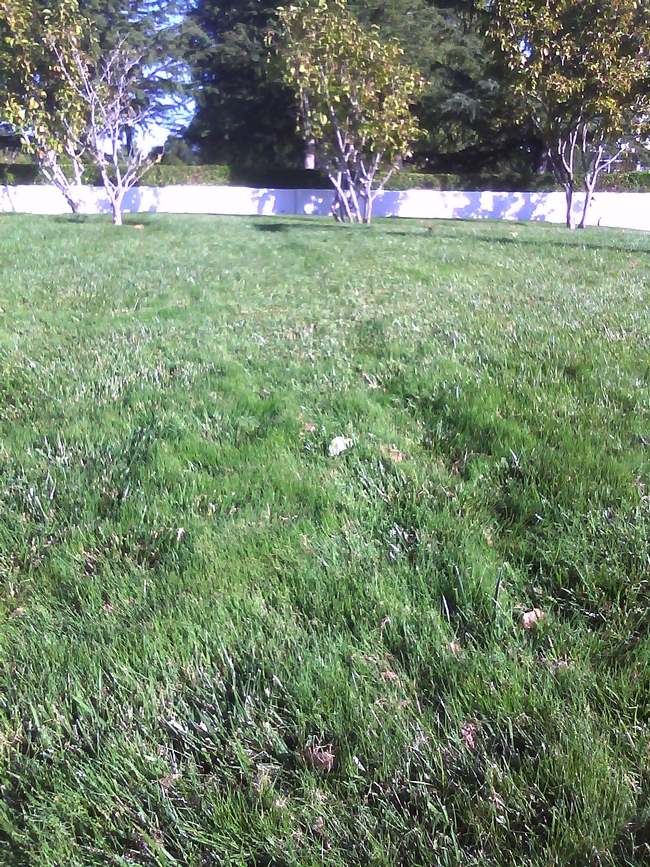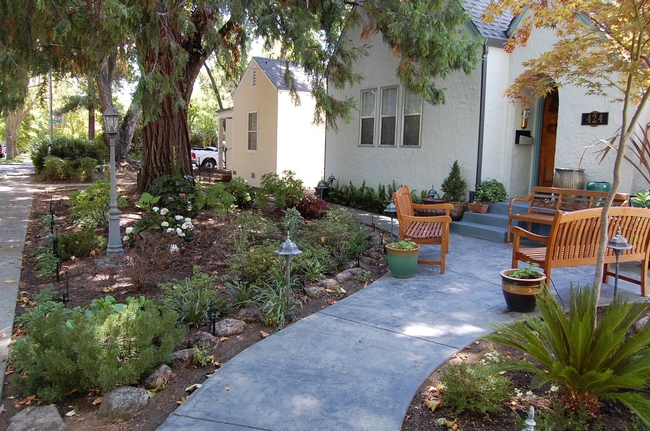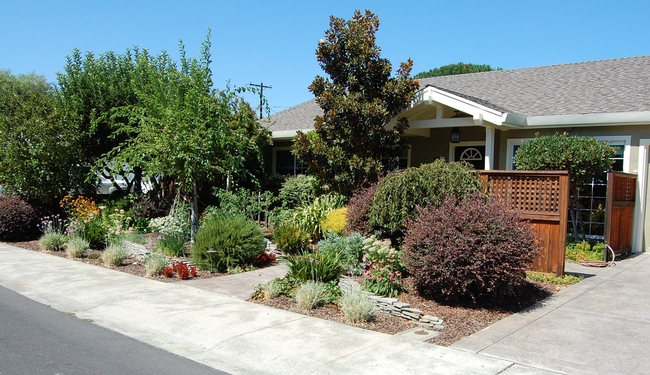Posts Tagged: turf
Turfgrass Help
I am a turf gardener so I get a sense of satisfaction when my grass is full, dark green and lush on hot summer days. It takes proper year round care to make it through an entire Northern California summer unscathed by the changing conditions. The summer season introduces heat, wind, pests, and uneven watering patterns that turf gardeners in our region need to prepare for to ensure summer success. I want to provide a few tips on how to better prepare your turf for this season. It is important to mow turf regularly and to mow at the correct length for the conditions. It is critical to cut the lawn at a longer, higher length during the summer than you might the rest of the year. Turf that is cut at a longer length protects the roots from the midday heat and maintains moisture by slowing evaporation. Longer blades of grass also help prevent wind from drying out the topsoil. An important decision for turf a gardener is how often to water the grass when it is hot outside. Research shows that it is most effective to water deeply only a couple times a week rather than watering shallow and more frequently. An irrigation survey can be helpful in determining your ideal watering needs but a good rule of thumb if you don’t have time for a survey is to water at least twice a week until the soil is thoroughly saturated. In other words, a good deep drenching twice a week is better than 10 minutes every day. A quarterly fertilizer regiment should be implemented before the summer is in full swing to keep the roots well fed. Fertilizers should not be applied during warm summer days. Other treatments that you might consider are dethatching and aerating your turf to improve air flow to the roots and prevent disease. The most important tip to take from this blog is to raise the blade on your mower now through October to increase the length of the cut during the summer months. That tip alone should keep your turf healthier than it normally would if you were mowing at lower golf course levels. I attached a couple photos of grass being cut too short and not being watered deeply enough for reference.

Examples of unhealthy turf. (photos by Ed Walbolt)
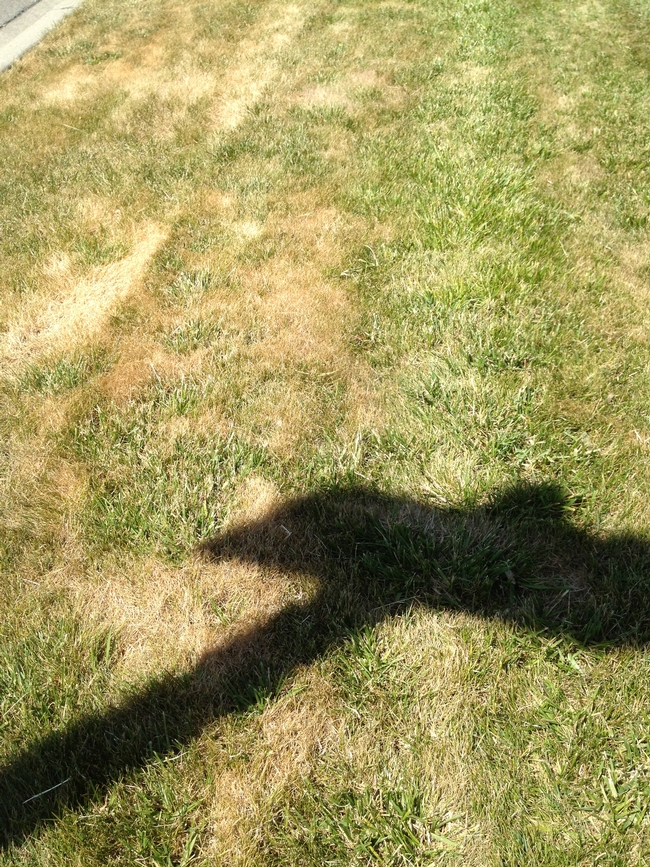
dry turff
Turf Tidbits
March is a great time to rehabilitate your lawn by filling in bare patches with seed. The spring season offers temperatures moderate enough to foster new growth through germination of turf seeds, but it remains cool enough not to stress new grass once it begins growing and allows it time to mature and take root.
The issues to consider before you start your lawn rehabilitation job are to note the type of turf that already exists in your space so that you can get a matching blend, the amount of sun and shade the particular area might get, and the amount of water the area gets so that you get the proper seeds for your needs The materials you will want to have for the tasks are a rake, a shovel, a bag or two of topsoil made from organic matter, high quality turf seed, starter fertilizer, and a hand-watering container.
The first order of business is to isolate the area you are working on from any pets or foot traffic because turf seeds and seedlings are delicate and will be ruined by even light trampling. Secondly, you want to clear the area of any old dead turf or other dead or dying matter covering the ground you are going to work on. Once the area is cleared up and ready, you will want to dig down about 4 to 6 inches and till the soil until it is soft and workable and all of the large clods have been broken up. You will rake the area so that the ground is even with the other areas where grass is already growing and all of the dirt is uniform in size and texture and elevation. Next, generously spread the turf seed in the area you have prepared making sure to slightly overspread seed on the edges as evenly as possible. Finally, you will cover the seed with about an inch of topsoil which will thin out once you add water. You should not be able to see any seeds through the topsoil; at the same time you are not trying to bury the seeds any deeper than just under the surface of the soil. Once all of the topsoil has been uniformly applied and the seeds are completely covered you will very gently water the area trying to apply the watering as delicately as possible to prevent erosion of the work you just did.
You will want to inspect the area twice a day for 2 weeks to make sure that the seeds continue to maintain minimal moisture content. You want to keep the topsoil slightly moist constantly until you notice baby turf emerging. Once the new grass begins to grow you will want to scale the watering back to allow the new turf to establish its roots. A watering balance is needed at this point, you want to water thoroughly and then allow the grass to dry out almost completely before the next application of water. A starter fertilizer should be applied at this time also to encourage mature rooting and growth. You will want to closely consult the directions on the seed packaging to check for varying details. (NOTE: the Master Gardener program does not endorse the Kellogg's or Scott's products, these photos are for demonstration purposes only)
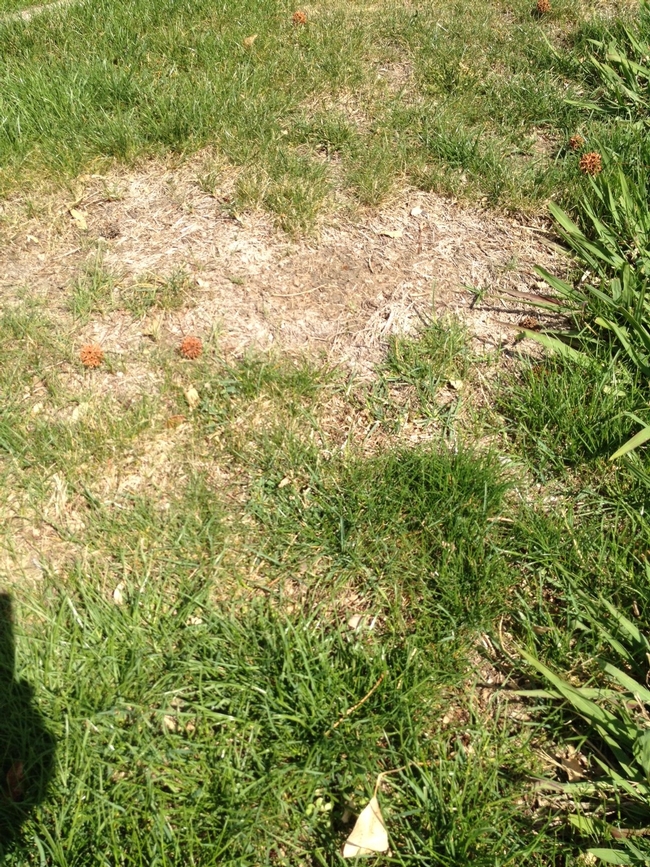
Turf that needs rehab. (photos by Ed Walbolt)
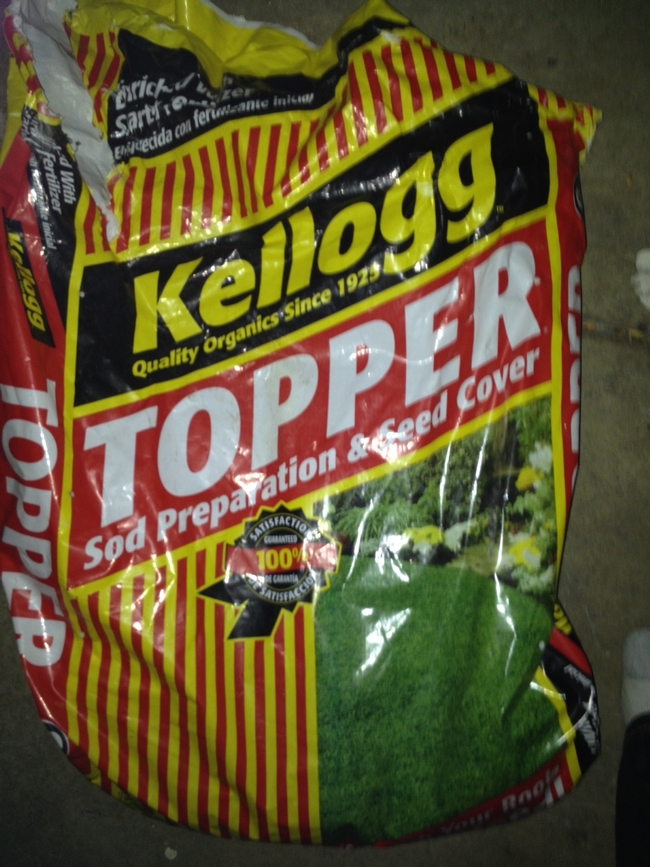
Top soil bag.
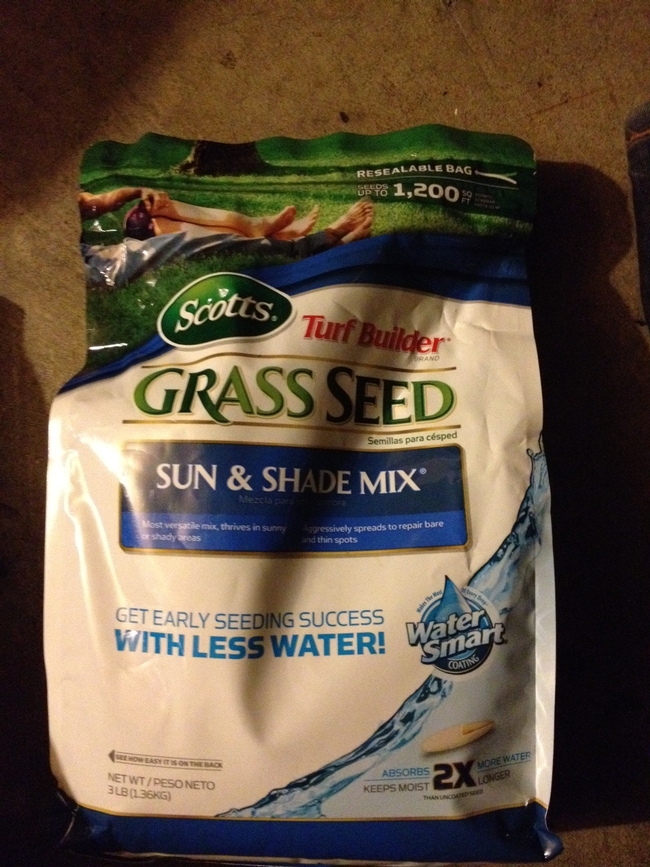
Seed bag.
Rebates Available to Replace Lawns or Install a Smart Irrigation Controller
Want to reduce the amount of water you use in your garden, and help reduce your water bill next summer? There are two rebate programs offered by Solano County Water Agency (SCWA), the Turf Replacement Program and the Smart Irrigation Rebate Program. These rebates are while funding lasts, first come, first serve and this cycle runs through June 30, 2012. You must live in Solano County to qualify.
The Turf Replacement Program offers Solano County homeowners rebates of .60 ? per square foot or up to $600 dollars towards a beautiful new water-wise garden. You must get approval from SCWA before you begin your project, and lawns that are already dead or dying will not qualify. For more information or schedule a pre-inspection call SCWA at 707.455.1113.
Another option is to replace your existing irrigation controller with a Smart Irrigation controller. You can use it with your existing irrigation system and still qualify for $300, $700 or up to $1,000 rebate depending on the size of your station. For more information or to make an appointment for a free landscape survey, call 800-366-6995.
SCWA has other rebate programs for more information: http://solanosaveswater.org/Rebates.html .
A Meterology Delight
This year as summer transitioned to fall, we were blessed with a few days of unusually early fall rain. In some areas of Solano County almost two inches of precipitation fell after only a few days in late September and early October. A benefit of the rain was that Solano’s turf and native grasses were transformed from being burned out, parched, and dangerously flammable to being lush, spring-like, and full of new light green growth hues and vigor. The areas in my turf garden that were worn down quickly filled in with new growth now covering the previously bare patches caused by the late summer’s heat. The timing on the rains could not have come at a better time for a lot of us, most specifically me. My office was recently moved 50 miles farther from home and with the long hours commuting between there and Fairfield I had been neglecting my turf garden. I intended to find some time to water and fertilize my Fescue/Bluegrass blend to prepare for the fall, but I had not gotten around to it before the rains came. Needless to say, I think I can put off my fertilizer regiment until the end of November without worry. Solano County doesn’t often get nature’s showers until November or December so it was a unique nitrogen-rich phenomenon this year that many of our gardens benefitted from.
Lawn Makes Me Yawn
That scraping sound you hear is my soapbox being dragged out. Today’s rant is nothing new, but I’m gonna rant anyway:
Do we really need our front lawns? I don’t think we do.
I know many of us are wedded to the idea of a lovely green expanse that fills space and provides a great spot for kids and dogs to play. I maintain, however, that California is not the ideal place for a manicured lawn. Our climate is dry, unlike the Midwest and East where summer rains keep lawns moist and green. We Californians have to irrigate our lawns, a lot. And therein lies the rub: Our state’s precious water is needed for other things.
There’s no arguing that less-thirsty, more appropriate turfgrasses are being developed for Western yards. Check the UC Guide to Healthy Lawns (http://www.ipm.ucdavis.edu/TOOLS/TURF/index.html) for some really helpful, detailed information on turf species.
In the meantime, perhaps you’ve noticed a small trend in Vacaville? Some front yards have gone turf-free. And the results are really attractive. Water-wise plantings are being used, and I’m not talking cactus set among yards of white rock. I’m seeing colorful salvias, graceful meadow grasses, lush ferns, spiky phormiums, delicate Japanese maples, even edibles, all used to great effect.
You should know this: This kind of landscape is cheaper and easier to maintain than a lawn. Drip irrigation is perfect in these situations (placing water right where it needs to go), no need to mow (less air pollution), no need to blow (less noise), and very little need to fertilize (cleaner runoff after a rain). Perhaps best of all: That water bill will be lower, and the water is being used more responsibly.
Amen to that.


